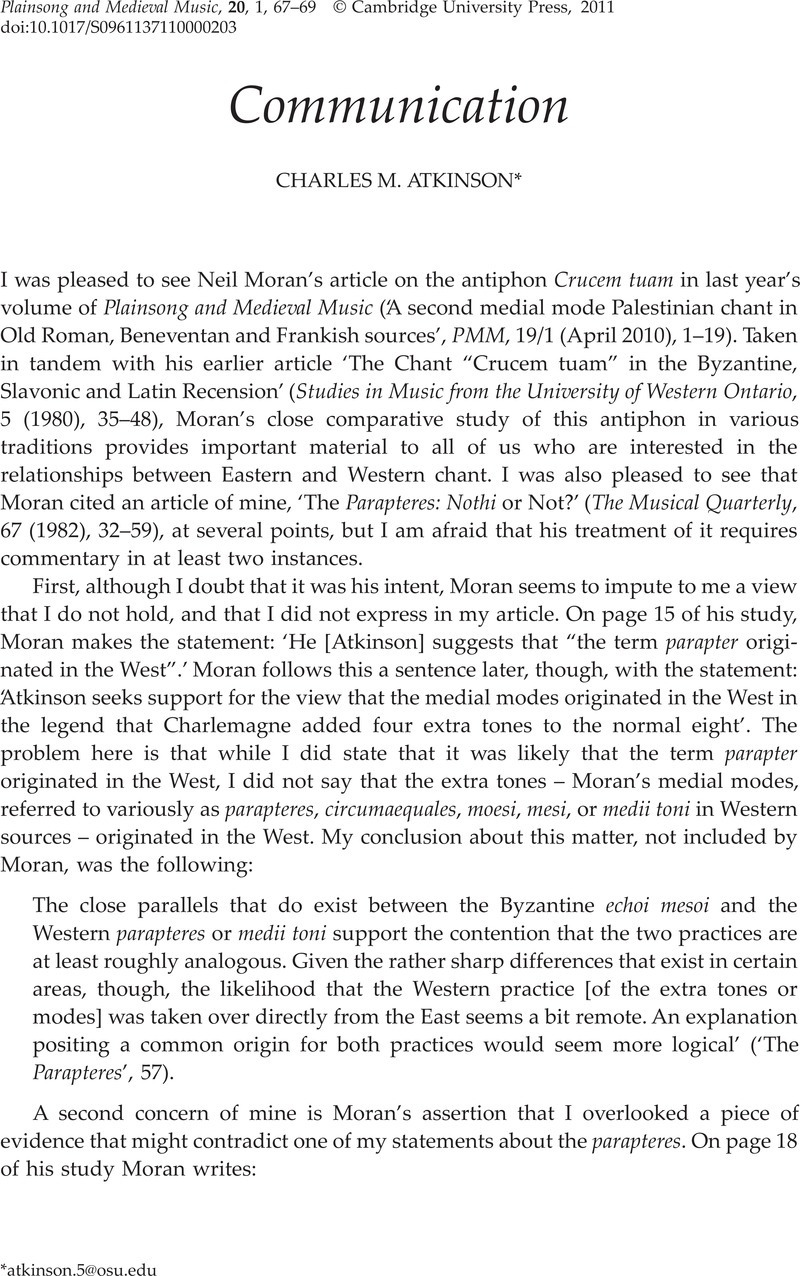No CrossRef data available.
Article contents
Abstract

- Type
- Other
- Information
- Copyright
- Copyright © Cambridge University Press 2011
References
1 Oliver Gerlach, ‘About the Import of the Byzantine Intonation AIANOEANE in a 9th-century Tonary’, http://home.arcor.de/olins/publications/OliverGerlachAIANOEANE.pdf, 2, cited in Moran, ‘A second medial mode’, 18, n. 52.
2 Important to note here is that an intonation formula with the same syllables, AIANEOEANE, appears as the formula for mode 3 among the intonation formulas in the manuscript Munich, Bayerische Staatsbibliothek, clm 14272, fols. 62v–64v (see Bailey, Terence, The Intonation Formulas of Western Chant (Toronto, 1974), 50, 91–95)Google Scholar . This is the same manuscript that contains the earliest copy of the Alia musica, on fols. 175–81. According to Bailey, a formula with the same syllables, and virtually the same melody, appears in the manuscripts Milan, Biblioteca Ambrosiana, H 146 inf., fols. 62–62v, and Cambridge, Corpus Christi College, 473, fols. 71–4. These formulas traverse the tonal space b to E, without ascending to c or descending to D (ibid.). At the same time, the mode 3 neumae that often accompany the intonation formulas extend upward to d, and several descend to D or even C beneath the final (see ibid., 64–6).




